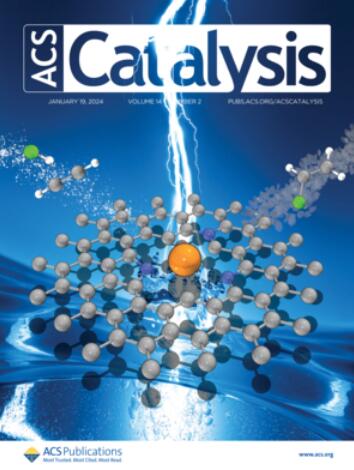Electrochemical Access to Difluoromethyl Groups: An Overview of Scope, Mechanisms, and Challenges
IF 11.3
1区 化学
Q1 CHEMISTRY, PHYSICAL
引用次数: 0
Abstract
The difluoromethyl (−CF2H) group has gained considerable significance in synthetic and medicinal chemistry due to its ability to modulate molecular properties, including electronic effects and hydrogen-bonding capability. Traditional difluoromethylation methods often require specialized reagents and demanding reaction conditions, potentially limiting their applicability across diverse substrates. Electrochemical difluoromethylation has emerged as an alternative approach that enables the in situ generation of difluoromethylating species under controlled redox conditions. This Perspective examines recent advancements in electrochemical difluoromethylation, focusing on key mechanistic aspects with substrate scope. Electrochemical strategies have facilitated chemo- and regioselective radical-mediated transformations that are often challenging to achieve using conventional chemical or photochemical methods. Additionally, recent studies have explored defluorinative difluoromethylation, leveraging C–F bond activation to generate CF2H-containing compounds from abundant CF3 precursors. Despite these advances, significant challenges remain, including the need for enhanced selectivity and improved reaction scalability. This Perspective aims to provide a critical analysis of the current state of electrochemical difluoromethylation, highlighting its mechanistic underpinnings and potential areas for further development.

求助全文
约1分钟内获得全文
求助全文
来源期刊

ACS Catalysis
CHEMISTRY, PHYSICAL-
CiteScore
20.80
自引率
6.20%
发文量
1253
审稿时长
1.5 months
期刊介绍:
ACS Catalysis is an esteemed journal that publishes original research in the fields of heterogeneous catalysis, molecular catalysis, and biocatalysis. It offers broad coverage across diverse areas such as life sciences, organometallics and synthesis, photochemistry and electrochemistry, drug discovery and synthesis, materials science, environmental protection, polymer discovery and synthesis, and energy and fuels.
The scope of the journal is to showcase innovative work in various aspects of catalysis. This includes new reactions and novel synthetic approaches utilizing known catalysts, the discovery or modification of new catalysts, elucidation of catalytic mechanisms through cutting-edge investigations, practical enhancements of existing processes, as well as conceptual advances in the field. Contributions to ACS Catalysis can encompass both experimental and theoretical research focused on catalytic molecules, macromolecules, and materials that exhibit catalytic turnover.
 求助内容:
求助内容: 应助结果提醒方式:
应助结果提醒方式:


